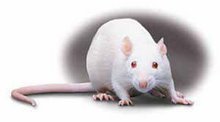If that statement seems odd to you, then you are either old and forgetful or younger than 25, or were too much of a lily to go outdoors.
Back when I was a kid, running around mostly-naked on the beach during summertime, the word "sunscreen" meant a wide-brimmed hat. I would slather Coppertone on myself. That rich, mildly-chocolate smelling yummy lotion infused with cocoa butter seemed an excellent means by which I could sauté rotund little body to a beautiful tan in no time without sizzling to a crisp in the mid-day Southern sun. SPF values were something like 2 or 4, which meant that drenching myself with Coppertone only protected me four times longer from imitating a beet, which I did often. Anytime now I expect skin cancer to crop up and remind me why my grandma carried an umbrella (which she called a "parasol") to shade herself when she went outside (and with good reason – she developed skin cancer in her elder years).
But by the 80's, the term "suntan lotion" was gradually being replaced by "sunblock" or "sunscreen", until now you never hear the term "suntan lotion". HERE is a good discussion about the change in terms.
Is it wrong of me to be wistful? Maybe it's because I live in the Northwest, where it's too testicle-shriveling cold most of the year to lay around nearly naked absorbing photons, but I just don't hear about people trying to get tans anymore. Everyone's too busy coating themselves with sun-repelling chemicals. I miss being brown.
 Besides, this picture illustrates how "artistic" you can be with your melanoma-inducing love of sun (see THIS page for information on the artist).
Besides, this picture illustrates how "artistic" you can be with your melanoma-inducing love of sun (see THIS page for information on the artist).Oh, sure, sure, I know all the arguments. Skin cancer = bad. Pale = good. Love the skin you're in. No one wants to look like an alligator by the time they're 45. Even I use Coppertone Sport sunblock, with SPF 15, and my children, who are dark-complected African-Americans, get coated with Baby Blanket sunscreen, SPF 50+.
But before we pat ourselves on the back for being health-conscious and educated about the potential dangers of UV radiation, let us consider a recent study that shows that sunblock lotions washed off of our sweaty, body-surfing bodies are contributing to the bleaching of coral reefs:
http://www.physorg.com/news130762664.html
Yes, in addition to the effects of global climate changes like increased UV radiation, increasing water temperatures, and rising water levels, plus industrial pollution, which endangers some 60 percent of coral reefs, some 10 percent of reefs are also at danger to being bleached by dangerous by-products produced when sunscreen breaks down. 78 million tourists who visit these reefs each year may gawk at the incredibly diversity of fishes and corals, but they are also releasing some 4000 to 6000 metric tonnes of sunscreen into that water. Researchers demonstrated that even small doses of sunscreen can bleach coral reefs within 96 hours of application, probably by stimulating viral infection of the coral.
No, I'm not advocating giving up the sunscreen. But maybe my grandma had the right idea. Let's not rely completely on painting our bodies with chemical sunscreens. Bring a parasol. Or at least a beach umbrella. But I still recommend getting out from under it enough to get some Vitamin D and maybe darken your skin enough to hide the veins. Ew!
Image taken from HERE.





